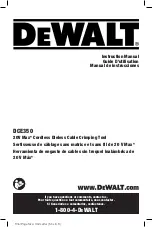
• When the tank quantity decreases to the
desired level, move the tank switch to
OFF. This will cause the shutoff valve
to close and the green CLOSED light
will illuminate.
• Rotate the mode selector to OFF.
• Move the power switch to OFF.
• R e m ove t h e d e f u e l i n g n o z z l e f r o m
the adapter. Reinstall the cover and close
the door carefully.
• Check that all lights and switches are off
and stow the refuel-defuel control panel.
TAIL TANK
GENERAL
An additional fuel tank, which will increase
the fuel load by some 187.7 U.S. gallons (1,250
pounds), is located in the tail.
A primary fuel transfer and a backup, sec-
ondary transfer system will automatically trans-
fer fuel from the tail tank to the auxiliary tank.
Pressure refueling and defueling is possible
through the single-point refueling and defu-
eling panel.
The tail tank cannot be refueled unless the
auxiliary tank is full.
The tail tank is also equipped with a fuel dump
system, as well as a quantity indicator (Fig-
ure 5-12) in the cockpit.
The tail tank is located aft of the vertical sta-
bilizer rear spar. It includes two transfer pumps
(DC-powered), No. 1 and No. 2 tail tank
empty/level switches, fuel quantity transmit-
ter, dump valve, and tail tank fuel level switch.
It also has a vent system connected to the rear
air duct and exit flush at the bottom of the
fuselage via a flame arrester.
NORMAL TRANSFER
With the ARMED—OFF switch on the tail tank
fuel transfer panel (see Figure 5-7) set to
ARMED, the fuel transfers automatically to
the auxiliary tank at the rate of approximately
25 pounds per minute. When only unusable
fuel (approximately 1.3 U.S. gallons) is left, the
shutoff valve closes and the fuel transfer pump
stops.
If the ARMED—OFF switch is set to OFF
while there is still usable fuel in the tail tank,
the NOT ARMED light illuminates. If fuel in
the auxiliary tank reaches the level of the No.
2 auxiliary tank level switch, the NOT ARMED
light flashes. Placing the ARMED—OFF
switch to the ARMED position starts the nor-
mal transfer, and the NOT ARMED light goes
out. If the NOT ARMED light remains on,
jettison fuel.
In the event of a normal fuel transfer failure,
the SEC TRANS light comes on, shutting
down the primary and starting the secondary
transfer system. The SEC TRANS light indi-
cates that secondary transfer is taking place at
approximately 25 pounds per minute. Moni-
tor fuel quantity during secondary transfer. If
adequate transfer cannot be confirmed with a
maximum of ten minutes, jettison fuel.
The fuel transfer line has a nitrogen-pressur-
ized shroud in the rotor boost zone. A perfo-
ration in this shroud signals all open shutoff
valves to close and shuts down the boost pump.
Fuel transfer cannot be accomplished unless
the shroud is replaced and pressurized. Fuel
in this case has to be jettisoned.
FlightSafety Canada
L t é e
L t d .
CL-600-2B16 PILOT TRAINING MANUAL
CL 601-3R
5-15
FOR TRAINING PURPOSES ONLY
TOTAL
FUEL
QUANTITY
LB
AUX
L. MAIN
R. MAIN
TAIL
Figure 5-12. Tail Tank Quantity Panel
















































